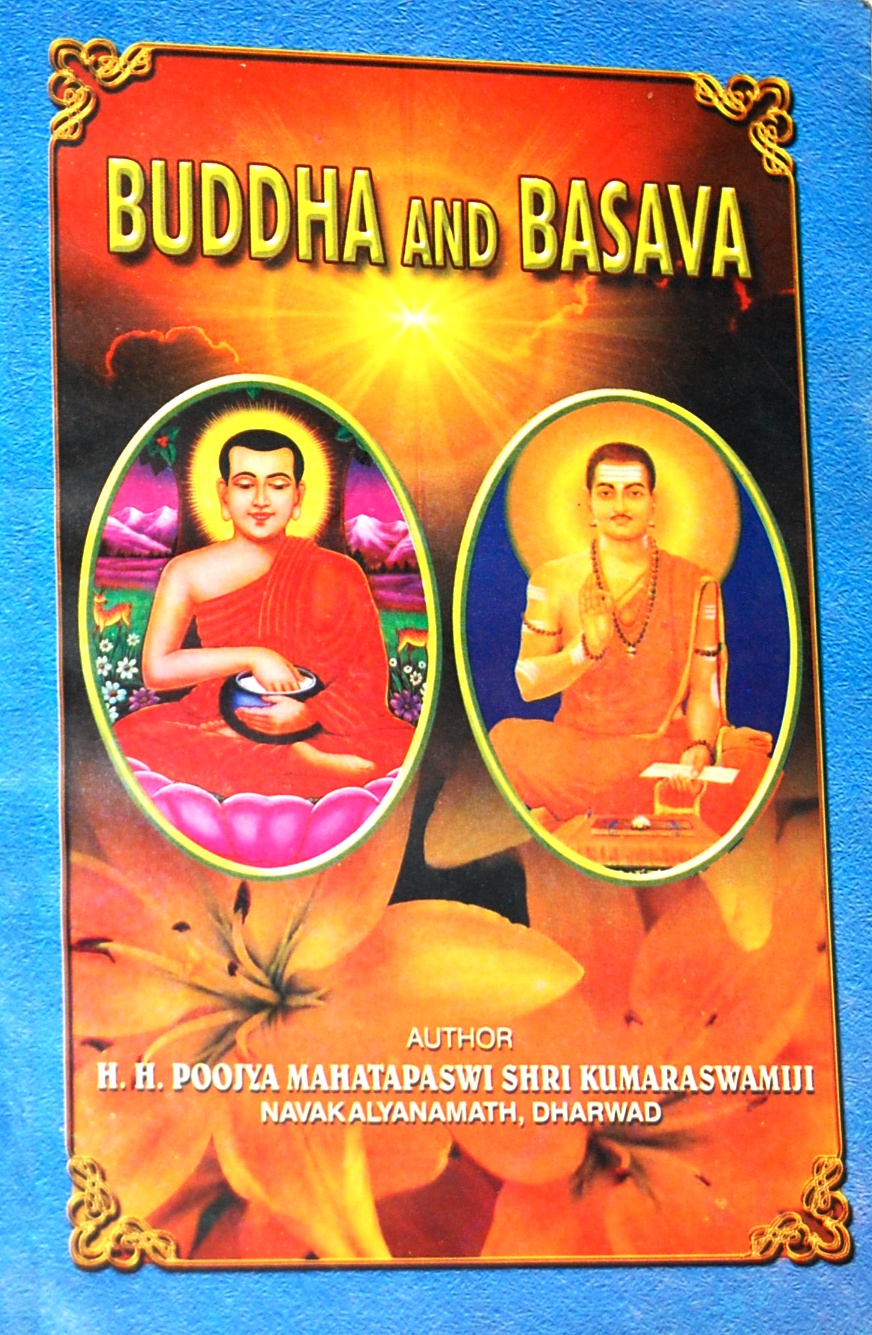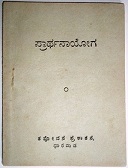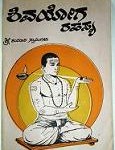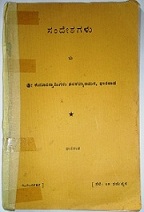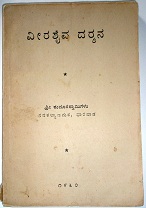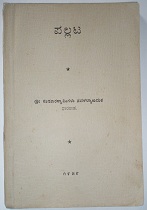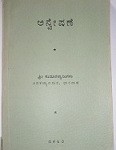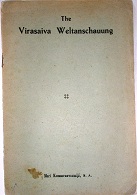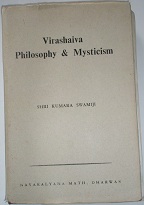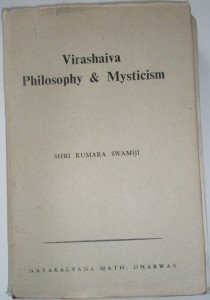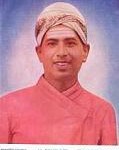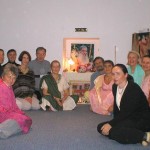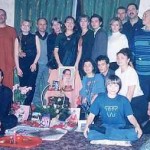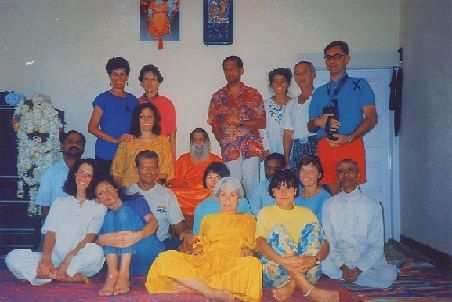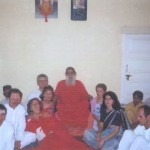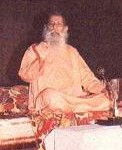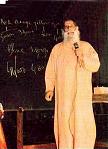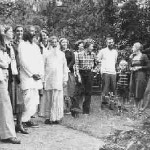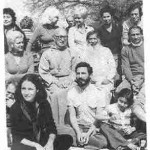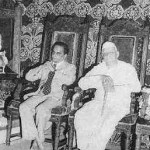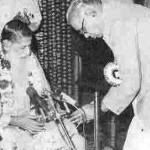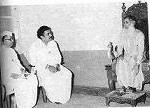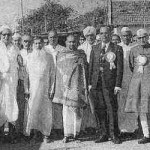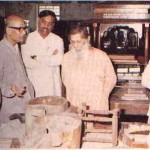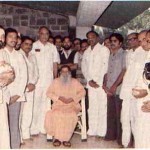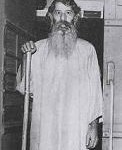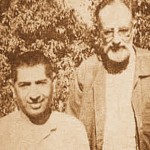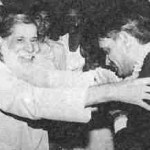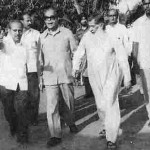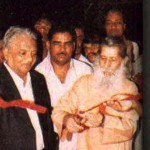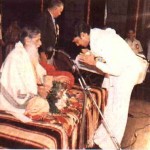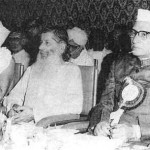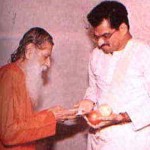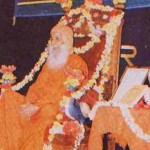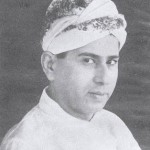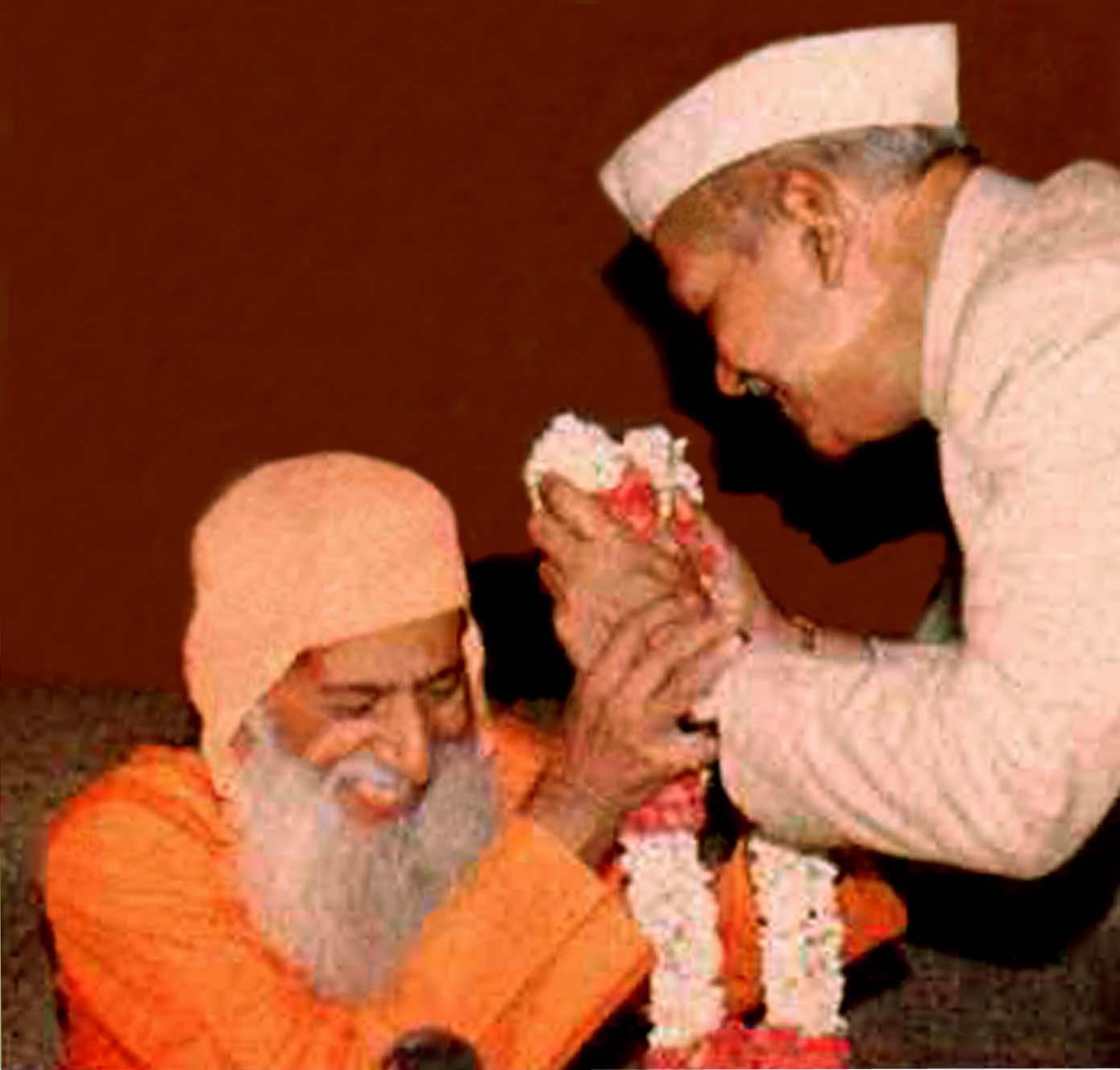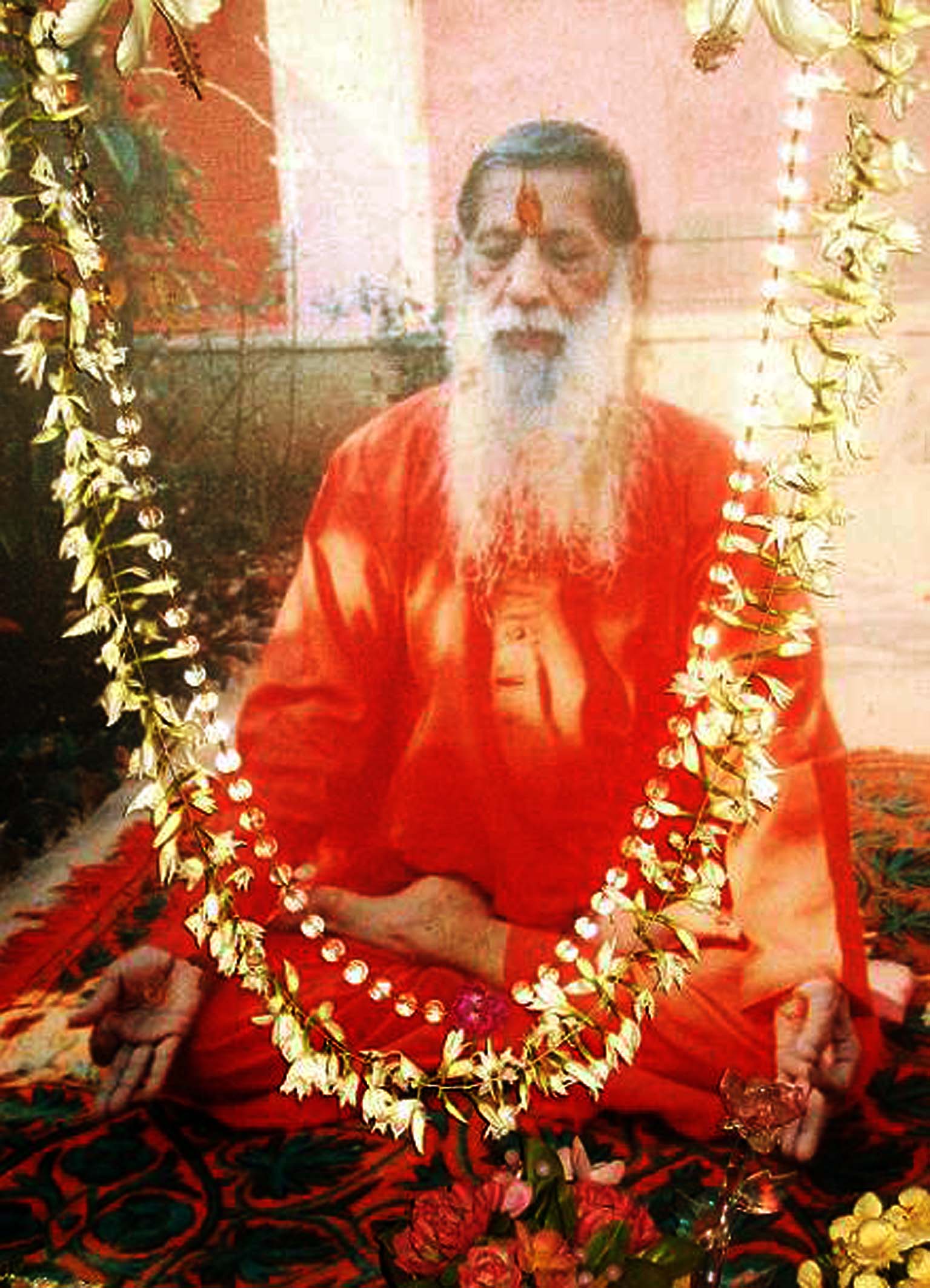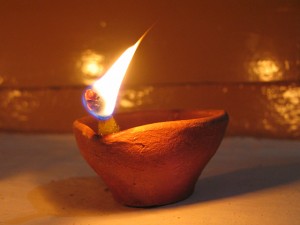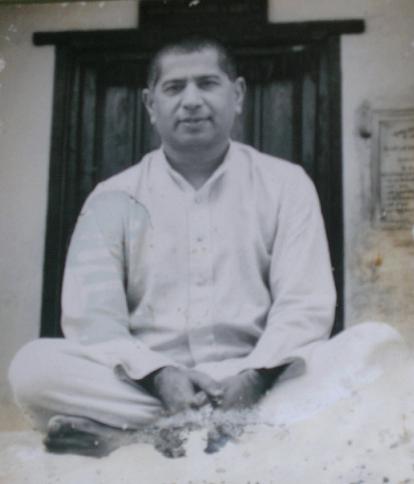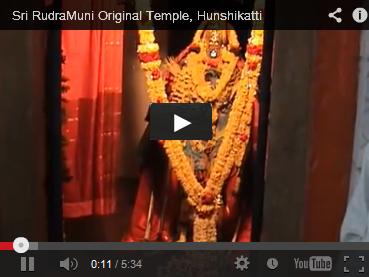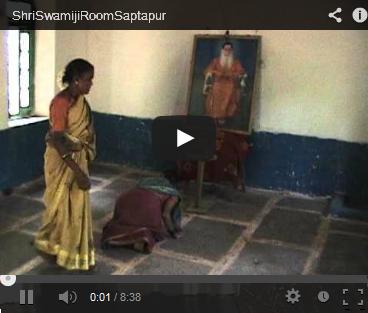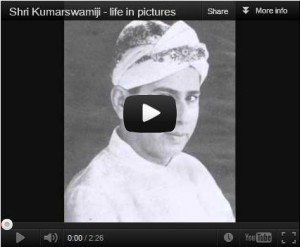Man is neither a machine nor a device but a being, a complex being indeed. He therefore cannot be saved by machinery; only by a spirito-psychological path, by an entire change which shall affect all the members of his being, can he be liberated from his discords and imperfections. Shiva-yoga is a path at the perfecting of man in all his members, at the spiritualization of all his forces. On this pilgrim’s path there are the psychological states of spiritual consciousness. Being and becoming, one and many are both true and are both the same thing. The Aikya or united with God has the knowledge of reality and lives in the truth consciousness, his will becomes the spontaneous law of the truth in him and knowing all its acts and the objective leads straight to the human destiny which is the enjoyment of delight – the state of immortality. From contact set up with the divine delight, he draws that amazing strength, that immovable peace, that power of dealing with circumstance which is one of the most marked tics of the unitive or eternal life.
This is the psychological aspect of Shiva-yoga as dealt by Shri Kumarswamiji in the following article.
It is now generally accepted that the subject of Yoga is among the oldest and richest of human traditions and was perhaps well established during the Indus Valley civilization about 5000 years ago. The inscriptions found at Mohenjo Daro and Harappa have revealed the existence of God Shiva, seated in a Yoga posture. The term “Minakanna” obtained in the same inscription suggests the early idea of Yogic discipline. In those remote days, the Yogis noted for their asceticism and discipline were addressed as Minas. Shiva-yoga was sponsored by these learned Minas dwelling in the caves. Shiva-yoga is at once historical, democratic and scientific. Shiva-yoga has a history going back to the Chalcolithic age about 5000 years ago. Shiva-yoga is democratic in the sense that everybody is eligible to practise it, irrespective of caste, colour, creed, rank, age, sex and position. Shiva-yoga is scientific in the sense that it is entirely based upon the laws of light and electricity.
In man there are organs for hearing, seeing, touching, tasting and smelling. Similarly there is an organ for thought and it is pineal gland. Of course it is dormant but it is possible to galvanize it into activity. When it is stirred into activity, thought force is raised to nth degree and cosmic intelligence begins to function. Scientists opine that the pineal gland is a relic of the third eye, but it is vestigial. The adepts affirm that it is embryonical and therefore it is capable of being developed. The whole process of Shiva-yoga is designed to bring about the development of this dormant pineal gland through steadfast gazing at Linga. Our inner states of consciousness do succeed each other at different rates of vibrations. What escapes us on the slow, steady swing, we seize when the pace quickens.Our perceptions, like our passions, maintain themselves at higher and lower intensity. When our perceptions maintain themselves at a higher intensity, we will have a foretaste of cosmic consciousness. Poets and painters, musicians and mystics often enjoy the glimpse of cosmic consciousness. We may by a progressive expanding or a sudden luminous self-transcendence mount to the summit of cosmic consciousness. Shiva-yoga enables man to mount up to the heights of cosmic consciousness where he thinks not of the universe but with the universe and live in a harmony with the universal heartbeat.
Modern psychology is faced with the problem whether spirit of existence of which our waking life is only a surface and a phenomenon, is conscient or inconscient. If it is inconscient in its very nature then we cannot hope to illuminate ourselves with the hidden light, for light there is none or to possess ourselves of the secret of its power. On the other hand, if it is conscient, a consciousness deeper, greater and more powerful than our surface self, an endless vista of self-development opens out before us and the humanity marches towards infinite possibilities. The conscient and not the inconscient is the truth at which the ancient Indian Yoga arrived. And it distinguishes three strata of the self � the superficial, the subconscient and superconscient. Hence the source and support of existence is not the unconscious but the superconscious whose creative word is Aum, the Pranava, the ever-lasting Yea perpetually uttered within the depths of nature. This is the occult meaning of Chinnada. Chinnada is not a physical sound which emits when tuning fork is vibrating nor is it an internal sound which is heard when the ears are closed. It is indeed a spanda, a perpetual movement of Logos in the divine depths of the Absolute.
The Yogi focuses his attention upon Pranava or Aum and concentrates his energies at the middle of his eye-brows in order to stir into activity the higher astral sense. This occult sense which is termed the sixth organ is the spiritual radium. This symbolizes the ever wakeful eye of the Absolute that goes by the name of Chidbindu in occultism. This Chidbindu is in the nature of light but it is not the physical light nor is it internal light of the psychic but it is the light of consciousness, it is self awareness of the Absolute, it is the transcendent light ever emanating its splendour through the universe. If Chinnada is the life of the Absolute and Chidbindu is the light of the Absolute, Chitkala is the law or will of the Absolute. In occultism Kala is defined as Swatantrya Shakti; i. e. the will of the Absolute. But will not as we understand it something exterior to its object other than its works labouring on material outside itself but “will inherent in the being, inherent in the becoming, one with the movement of existence, self-conscious will that becomes what it sees and knows in itself, will that expresses as force of its own work and formulates itself in the result of its work.”
The Sahasrara or the coronal plexus, where the pineal resides, when stirred into full activity is the most resplendent of all the centres full of indescribable chromatic effects and vibrating with extreme rapidity thus opening the third eye through the awakening of the pineal. The realm of the Sahasrara is characterized by Chinnada, Chidbindu and Chitkala, by life that pulsates, by the light that illumines and by the law that governs.
Man is neither a machine nor a device but a being, a complex being indeed. He therefore cannot be saved by machinery; only by a spirito-psychological path, by an entire change which shall affect all the members of his being, can he be liberated from his discords and imperfections. It is admitted on all hands that there is a path which leads to the perfecting of man, a path indispensable to the pilgrim’s progress on his of self-realization. Shiva-yoga as a path at the perfecting of man in all his members, at the spiritualization of all his forces. That there is a path which brings about at inner change in man is recognized by all the great religions; and the chief features of that path are described in similar terms in every one of the great faiths of the world. In Shiva-yoga the path is characterised by six stages, namely Bhakta Sthala, Mahesha Sthala, Prasadi Sthala, Pranalingi Sthala, Sharana Sthala and Aikya Sthala.
Shat-sthala – Shiva-yoga star depicting six evolutionary states of consciousness
First in the sequence of the psychological states of spiritual consciousness comes Bhakta Sthala which is characterized by intense devotion to one and only one God. In this stage all the tender emotions of the pilgrim cluster around God crystallizing into devotion – the religious emotion par excellence. Psychologically it is a highly compound emotion consisting of wonder, fear, gratitude and negative self-feeling. This element of negative self-feeling is indeed the corner stone of devotion by which the soul tries to negate itself before the almighty God by constantly brooding upon the frailty of human nature and evanescence of worldly life. It is because negative self-feeling in an essential element in devotion that the extremely confident, self-satisfied and thoroughly conceited person is incapable of devotion and that genuine devotion implies a certain amount of humility and generosity. It is for this reason that the technique of Shiva-yoga in this stage is marked by qualitative varieties of emotional experience of God. The emotional qualities are indeed subjective in as much as they indicate to us primarily not the nature of things but the nature of our impulsive reactions to things. Considered from this psychological point of view, all the passionate yearnings, prayers, psychic burning or heat which a mystic enjoys are merely impulsive reactions to God.
This psychological reaction brings about a change of taste, the most momentous one that ever occurs in the mystic’s experience; for in him it means the first emergence of that love for God which is to constitute his distinctive character, an emergence crucial in effect on every department of his life. Thus the self awakens for the first time to the touch of the transcendent reality which results in the shifting of the field of consciousness from the first to the second or new birth. The ordinary birth of an individual into his own little world where he is controlled by the primary instincts of preservation and reproduction – instincts which are doubtless a direct inheritance from the brute ancestry. But the dawn of the second birth ushers the individual into the world of large consciousness often attended with the glimpses of a splendour without or a vision within. The passage from the first to the second birth is not so smooth as we want to suppose. It is oft chequered by series of strongly marked oscillations between states of pleasure and states of pain. These two states answer to the thirsts or tendencies – one the upward and inward, the other downward and outward.
So the pendulum of the self swings backward and forward consequent upon the repercussion of the primary instincts. This systole and diastole motion is usually marked by an intense heat or an interior flame which heralds the pangs of new birth.
This necessity of pain, this necessary sharing in the travail of the new birth is the theme of the second stage – Mahesha Sthala. The object of this Sthala is like the object of all purgation, freedom from the fetters of the senses, from the results of the environment and worldly education, from pride and prejudice, from selfhood in every form. The self in this stage is to be purged of all that stands between it and goodness. Purification is a perpetual process which involves the drastic turning of the self from the unreal to the real life, from the even tenor of easy-going life to the uneven stress of hard and ascetic life. Here asceticism finds its justification, for the Mahesha has to observe vows; a saying of the saint is pregnant with this truth:
” Not to touch the property of others is a vrata, not to cherish desire for other’s woman is sheela, not to injure any being is niyama.” Hence it is clear that the necessity of pain which mystics always welcome and often court inspires them to build up the moral character and so acquire goodness. The psychological basis of Bhakta Sthala is affective. The Bhakta is affected by qualitative varieties of emotional experience of God; whereas the psychological basis of Mahesha Sthala is conative. The conative drive of the psychic is here concentrated on-:eath of selfhood in its narrow individualistic sense. All the twisted elements of character which foster the existence of this unreal yet complex ego are to be pruned away. Then as with the trees of the forest, so with the self of man, new branches will spring into being and grow towards air and light. But this change of character is often a stormy matter; it is a period of actual battle between the inharmonious elements of the self and its lower and higher springs of action. Nevertheless the object of asceticism or renunciation brings about a complete sublimation of personality.
This sublimation of personality opens the mystic to a new vision, a new consciousness, a new mode of action which bespeaks of the existence of new and higher life. When this is reached the pilgrim has become pure, the mystic has become a sage. He is born again and there begins for him a new round of experiences. This is the stage of Prasadi, this is what is called the purified life. As passion is the keynote of the selfish life, so peace is the keynote of this serene life. Rising into it man is lifted above inharmony and disturbance. When perfect good is realized and known not as an opinion or an idea but as an experience, as a possession, then calm vision is acquired, tranquility, joy abides through all vicissitudes. The Prasadi’s life is ruled not by passions but by principles. It is founded not upon fleeting impulses but upon abiding laws. In its clear atmosphere the orderly sequence of all things is revealed, so that there is seen to be no room for sorrow, anxiety or regret. There reigns serenity of the purified life born of disinterested intellect. Hence the primacy of intellectual clarity. The more the mind becomes detached from the things outside, the more clear, sensitive and renewing it becomes. By the renewing of mind the whole personality will be transformed into the creative force that God intends it to be.
To attain to this high calling, the mystic in the Prasadi Sthala should not only reckon himself dead to the old ways of thought and imagination but he must also reckon himself alive into God’s power of life. He has to train his mind to think as far as is humanly possible from God’s standpoint, direct his imagination to visualize things from his point of view, so that he may become a swiftly sensitive and readily responsive receptacle of divine energy. Thus by being a perfect instrument of God, the Prasadi does not play at cross-purposes with His will. By an intution in his nature, an inspiration in his heart, and a reason in his mind he puts himself to the service of some strong ideal, some intelligent force and serves God and understands the firm Teacher. The Prasadi understands His stern yet loving compulsion in things and learns progress not by struggle and suffering but by obedience. To this end, the mystic in this stage lets his thoughts dwell in God, build up the consciousness of his power to the exclusion of all the fearing and worrying tendency with regard to the past or future. He does resolutely keep God’s all power in the very front of his consciousness and sees all the difficulties and anxieties through the light of his consciousness. This would bring deep stillness and unity of being and conserve all his energies for action. Thus the sine quo non of the Prasadi Sthala finds its justification in the saying, right thought is the infallible source of right action.
By training the cognitive dispositions, by cleansing the doors of perception and by being a perfect instrument of God, the mystic intuits self in natural things, the sense of unity in separateness, the evolutionary sweep of a mighty and actual life pulsating throughout the universe. It is this mighty and actual life that is called Prana-Linga in Shiva-yoga; and the Sadhaka of Shiva-yoga who becomes conscious of living reality of this world of becoming, the vast arena of divine activity, the indwelling creative power, as the very soul of immanent reality of the things is known as Prana Lingi, The self in this fourth stage participates actively and open-eyed in its mighty journey towards its God, and seeing with illumined sight all things and creatures as they are in that transcendent order, detects in them too that striving of creation to return to its centre which is the secret of the universe. To the Pranalingi the universe is presented as an expression of life; great cosmic life transcending and including our own life as an expression of the universe. The strange passionate philosophy of Neitzsche is really built upon an intense belief in this supernal nature and value of life. But the charm of his philosophy is marred by the one-sided individualism which precluded him from holding a just balance between the life of ego and the life of all. Says the pranalingi, “Give yourself to this divine and infinite life, mysterious cosmic energy in which you are ersed and of which you are born. Trust it, let it surge in on you, cast off the fetters of the senes, the remora of desire and making your interests identical with those of the all, rise to, freedom, to that spontaneous creative life which is inherent in every individual self, is our share of the universe. You are yourself vital, a free centre of energy did you but know it. You can move to higher levels, to greater reality, truer self-fulfilment, if you will. Though you be like an oyster in your shell you can open that shell to the living waters without and draw from the immortal vitality. Thus only by contact with the real self you know reality.”
We may then conclude the status of Pranalingi with these words of William James : “Along with the consciousness of the cosmos there occurs an intellectual enlightenment or illumination which alone would place the individual on a new plane of existence – would make him almost a member of a new species. To this is added a state of moral exaltation, an indescribable feeling of elevation, elation of joyousness and a quickening of the moral sense which is fully as striking and more important both to the individual and to the race than is the enhanced intellectual power. With these come, what may be called a sense of immortality, a consciousness of eternal life not a conviction that he shall have this but the consciousness that he has it already”.
Shata-sthala – Six Stages of Evolutionary Consciousness
The attainment of this exalted status is indeed a wonder and wonder lies not in the degree of the fact but in the fact itself, that the universe is not a mechanism but a life and that we are that life. The real cause of all intuitive knowledge-whether it be the exquisite dawn of love in youth or maiden or the intense fervour of creative genius or whether it be the religious frenzy of the saint or the rapt ecstacy of the mystic lies in the fact that it is the revelation of the self to the self, the great discovery by the individual self of the potentiality of its own infinite nature, of its own mighty power. It is a discovery of this potential mighty power which is the cause of all this manifested drama of space and time that forms the fulcrum of the fifth stage of Sharana Sthala. This almighty power is, as the Sharana observes, the inherent one yet variable inner force of all the changes of object consciousness. It is a fundamental truth of the becoming, a truth that supports and gives a spiritual significance to all its appearances. It is that, which determines the primary law of all becoming since it is the eternal seed from which all other things are the developments and derivations.This eternal seed or Shakti is the power of the spritual being, the conscious will of the Supreme, seed which the Absolute casts into the supramental vastness from which the manifested drama of space and time came into being.
The Sharana therefore believes more readily in a divine will, feels more vitally conscious of the spiritual urge in the irresistible sub-conscious intention of the world. For the order of the things in the cosmic life there is a great unseen power, an universal will, a cosmic force or law at work which not only gives us all the frame-work and condition of our idea and effort but evolves by them and by the law of these conditions out of the thing in being the thing that is to be. This power deals with us not so much according to the devices of reason and fictions of our intelligence, but according to the truth and sinerity of our being. Since the Sharana is a man of action, he will often seize on the idea of that universal force to divinise to himself the mighty energy that he feels driving him on the path of world altering deeds. In the eloquent words of Shri Aurobindo, “He is like a shell discharged from some dim titanic howitzer planted in concealment far behind this first line of trenches which we see thrown out by life into the material world; or he is like a planet sped out from Nature’s hands with its store of primal energy sufficient for its given time, its fixed service to the world-life, its settled orbit round sovereign light. He expresses in the idea of fate the living and constant sense of the energy which has cast him down here whether to break like some Vedic Marut the world’s nrm and established things or to cut through mountains a path down which new rivers of human destiny can pour. Like Indra or Bhagiratha he precedes, the throng of the divine waters follow. His movement decides their course; here Indus shall flow, there Ganges pace yellow leonine to the sea. Therefore we find that greatest men of action the world has seen were believers in fate or a divine will.”
Last comes the Aikya Sthala, the sixth stage which is characterised by a rarified psychological state of unitary consciousness that implies the invariable sense of unity or wholeness which accompanies the mystic experience. That there is a psychological sequence right up from the begining of Bhakta Sthala to the end of Aikya Sthala would be clear enough if we take a bird’s eye-view of the psychological basis of all The psychological basis of Bhakta Sthala is affective; of Mahesha, the conative; of Prasadi, the cognitive; of Pranalingi, the intuitive, of Sharana, the executive and of Aikya, the unitive. What does the psychology of this unitive state represent? It represents the final and successful establishment of that unitary consciousness which has been struggling for supremacy during the whole of the pilgrim’s progress. The deepest and richest levels of human personality have now attained to light and freedom. The soul has at last unified itself with the Supreme and with the cessation of stress and stir, spiritual strength has been liberated for new purposes,.
Shata-sthala – Six Stages of Evolutionary Consciousness
Sat-sthala – Six steps in Shiva-yoga depicting six evolutionary states of consciousness
In that act of union there is no suppression of life but a sublimation in its form. This change consists in the perfecting of personality by the utter surrender of want or desire which is the badge of subjection with its attendant discord and suffering. By an absolute renunciation of desire and its knot, the soul’s delight and being become self possession of the Aikya. It is only by Ananda or delight of being at once transcendent and universal, that man can be free in his soul and yet live in the world the full active life. For to that perfect person or Aikya there is nothing whatsoever in the universe that is really separate, individual or discrete, that every thing in its wholeness and completeness would expand to infinity and become the Absolute all; that every atom is balanced against the whole universe and acts and reacts at every moment with the whole and that whole is present at every moment, in every thing however minute it may be. This reveals that every thing depends upon what the Aikya sees, how he looks at existence soul’s view of things. Being and becoming, one and many are both true and are both the same thing. The Aikya has the knowledge of reality and lives in the truth consciousness, his will becomes the spontaneous law of the truth in him and knowing all its acts and the objective leads straight to the human destiny which is the enjoyment of delight – the state of immortality. From contact set up with the divine delight, he draws that amazing strength, that immovable peace, that power of dealing with circumstance which is one of the most marked tics of the unitive or eternal life. This is the psychological aspect of Shiva-yoga; I have dealt elsewhere with its physiological, biological aspects.
– Practice of Shivayoga –
Ishtalinga is an indispensable aid to Shivayoga and it is a stone with glazing covering. Since the steadfast gaze on the ishtalinga or Linga on the left palm generates magnetism, Linga is a crystal magnet. Linga is made of light grey slate stone and to be kept intact, it is covered all over with a fine durable paste prepared out of certain ingradients. The colour of Ajna Chakra or naso-ciliary plexus situated in the centre of the eye brows is also indigo. The colour of the coating of Linga and that of Ajna chakra being akin in nature, they act and react upon each other, thus enriching the magnetic force or intuitive power.
In Shivayoga the steadfast gazing at Linga is of vital importance, because it generates magnetism which galvanises into activity the dormant pineal gland. As a result of sustained look at Linga, the transmuted energies rise up the nerve channel into the medulla oblongata through the pons then pass down into the pituitary behind the eyes. The increasing pituitary radiations finally pass through the third ventricle until they awaken the pineal gland and the third eye lights up between them. Thus Shivayoga teaches us the technique of opening the third eye.
Sadhak practising Shiva-yoga
Practice of Shivayoga should be done early in the morning or/and late in the evening. The process is as follows: Place the Linga on the palm of the left hand so raised as to come in a line with the center of the eyebrows, behind the back and just above the left shoulder a burning candle or an oil fed lamp should be placed so that the light of the candle or the lamp is reflected in the Linga. With half closed eyes the aspirant should fix his attention on the speck of light reflected in Linga, the coating of which is blue black or indigo serving to widen and deepen concentration. The concentrated gaze generates psychic heat or tapas which stirs into activity the pineal gland. This produces spiritual light or tejas which in turn, leads to the release of ojas or the thought power which is at once a power of vision and a power of execution. Shivayoga therefore lands one into a region of effective will and intuitive knowledge, where to will is to create, to think is to see.
This article – Shata-sthala – Steps in Shiva-yoga – is taken from H.H.Mahatapasvi Shri Kumarswamiji-s book, ‘Dimensions of Yoga’.











